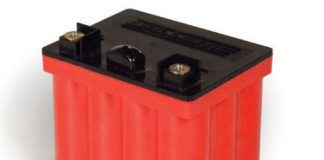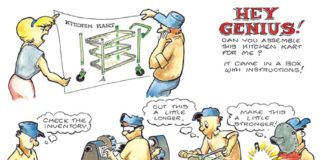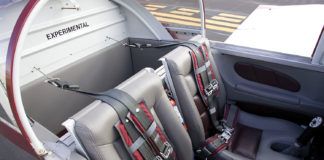One of the primary advantages of the conventional aft-tail configuration is that the major functions required for flight are performed by different components of the airplane. The wing is responsible for generating lift, the fuselage carries the passengers and payload and the tail provides longitudinal and directional stability and control.
This decoupling of effects simplifies the designer’s task, since each component can be designed for its particular function without too much concern that it will affect others adversely.
This month we will take a look at the considerations that go into designing the horizontal tail. Despite the apparent simplicity just described, the horizontal tail surfaces actually perform three different functions, which are interrelated.
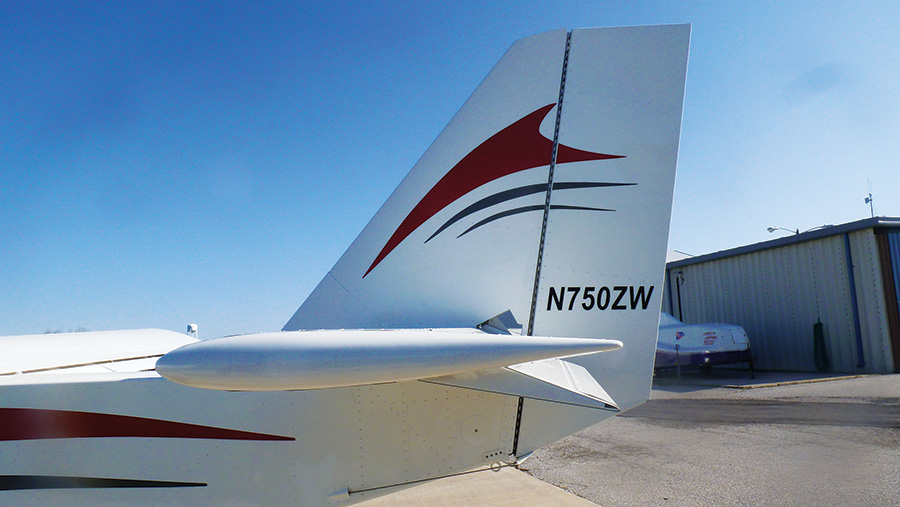
Horizontal tail surfaces perform three different functions, which are interrelated. They stabilize the aircraft in pitch, allow the aircraft to be trimmed, and provide pitch control for maneuvering.
Stabilization
The first function of the horizontal tail is to stabilize the airplane in pitch. In order to be stable, the airplane must tend to return to its original angle of attack if it is disturbed by a gust or other perturbation.
As the angle of attack changes, the lift of the tail must change so that the moment produced by the tail opposes the change in angle of attack. If the angle of attack increases, the lift of the tail must increase and produce a nose-down (negative) pitching moment. Conversely, if the angle of attack decreases, the lift on the tail decreases, producing a nose-up (positive) pitching moment. These moment changes tend to drive the airplane back to its original trimmed angle of attack.
The effectiveness of the tail is a function of the tail area and the moment arm between the tail and the CG of the airplane. The product of tail area times moment arm has dimensions of cubic feet, and is referred to as the “tail volume.” The tail must be large enough and have sufficient moment arm so that the airplane is stable with the center of gravity at the most aft point in the airplane’s center of gravity range.

The tail load required to trim an airplane varies with changing flight conditions. The most common way to change the lift (or down force) being produced by the tail is to deflect the elevator.
Trim
The second function of the horizontal tail is to trim the airplane. When the airplane is in steady flight, all of the moments acting about the center of gravity must be balanced so that there is no net moment about the CG. An airplane in this state of moment equilibrium is said to be trimmed.
The wing and body both produce aerodynamic pitching moments when the airplane is in flight. These moments are not zero and the airplane will not be in trim without the addition of an additional pitching moment to balance them out.
The horizontal tail provides this pitching moment by producing a force on the aft end of the fuselage that opposes the other moments. This trimming tail load may be either up or down depending on the details of the airplane’s configuration, loading and flight condition.
Since the tail load required to trim the airplane varies with changing flight conditions, it is necessary to be able to change the lift (or down force) being produced by the tail. There are two ways of doing this.
The first is to hinge the aft portion of the tail to form a flap (the elevator) attached to the back of a fixed tailplane. The pilot can change lift of the tail by deflecting the elevator.
The second approach is to pivot the whole tailplane to adjust the angle of attack of the tail directly.
Combinations of these two approaches are not uncommon. Some airplanes have an elevator-type tail but the pilot can also adjust the incidence of the fixed portion of the horizontal tail so that the airplane does not have to fly with the elevator deflected to be in trim.
Conversely, most manually controlled airplanes with all-moving tailplanes have large tabs hinged to the trailing edge of the tail to control hinge moments and increase the control power of the tail.
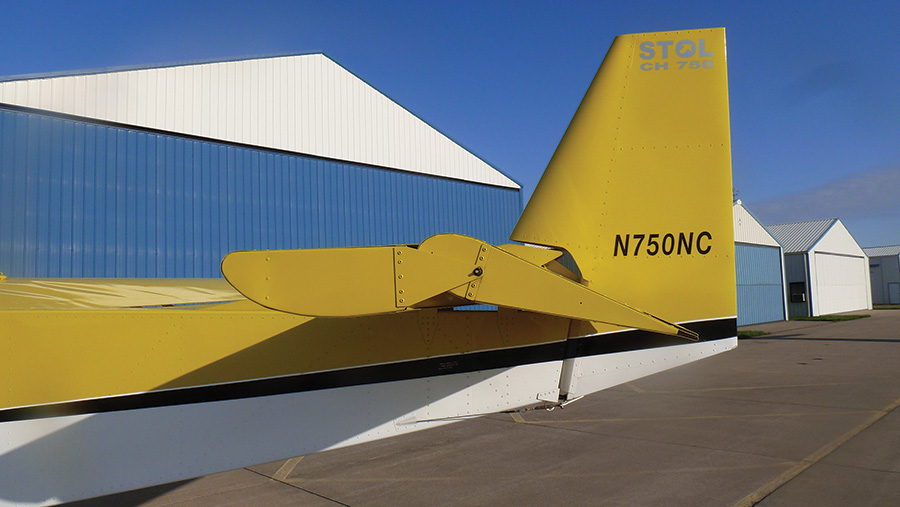
The horizontal stabilizer on this Zenith CH 750 STOL has a huge amount of camber and looks upside down. It is designed to generate downward force to produce a high angle of attack for short-field operations.
Pitch Control
The third function of the tail is to provide pitch control for maneuvering. When the pilot wants to change the attitude or flight path of the airplane, he must be able generate a moment that will cause the airplane to pitch.
This is similar to trim in that the pilot controls the lift of the tail to generate pitching moments on the airplane, but different since the pilot is commanding a nose-up or nose-down pitch rate, rather than trying to maintain a trimmed steady-state attitude.
The horizontal tail must be capable of generating enough pitching moment so that the pilot has the control authority to control the airplane’s attitude and pitch rate at any point in the flight envelope.
There are some flight conditions that require special attention when considering the control power required from the horizontal tail.
One of these is nosewheel liftoff during takeoff. If the airplane has tricycle landing gear, the pilot must be able to rotate the airplane to a positive angle of attack to lift off. In general it should be possible to lift the nosewheel at an airspeed below the stall with the CG at the most forward allowable position. FAR Part 23 requires that an airplane be able to lift its nosewheel when rolling at 85% of stall speed in this condition.
If the airplane has a tailwheel landing gear, there is a similar requirement that the airplane be able to lift the tailwheel off the ground when loaded to its aft C.G. limit while traveling at 80% of its stall speed.
This tailwheel liftoff requirement can be troublesome if the airplane has an all-moving tail. If the choice of tail airfoil and travel is not correct, or the tail has too much trailing-edge-down travel, it is possible for the pilot to stall the tail during the ground run and be unable to rotate the airplane to the proper attitude for takeoff.
Another critical flight condition for tail sizing is the landing flare. In this situation, with the airplane at its most forward C.G. and the flaps and landing gear down, the pilot must have enough pitch control available to trim the airplane and to bring the nose up in the final flare maneuver.
In order to satisfy this last requirement, the airplane must have somewhat more control power available at normal landing speed than the minimum required to trim the airplane. The pilot must be able to produce a nose-up pitch rate from the trimmed condition to flare the airplane and arrest its sink rate before ground contact.
A final flight condition that must be considered is pitch recovery from high angles of attack or nose-up gust upsets. If the airplane is at a high angle of attack approaching or beyond the stall, the pilot must be able to lower the nose and reduce angle of attack in order to break the stall and retain control of the airplane. The elevator must therefore have enough control power in the negative direction to produce a nose-down pitch rate at the highest angle of attack that the airplane is expected to achieve.
The designer should note that this maximum angle of attack will be well beyond the angle of attack at which the wing first stalls. If the airplane approaches the stall with a large nose-up pitch rate, it will continue to nose up for some time after the wing has started to stall. By the time the pitch rate is zero, the angle of attack will be well above the nominal stall angle of attack. In extreme cases, the angle of attack reached by this type of dynamic overshoot can be quite large.
It is also possible to reach larger-than-expected angles of attack because of gusts or turbulence. If the airplane is flying near the stall angle of attack and encounters a strong up gust, the gust will induce a positive angle of attack change and may put the angle of attack above the stall angle of attack. The pilot must be able to force the airplane’s nose down at any angle of attack in order to prevent a hung stall and loss of control of the airplane.
General Tail Design Considerations
A summary and a few other things:
1. The airplane must have sufficient tail volume to fly safely when loaded anywhere within its allowable C.G. range. The aft limit is set by the tail volume exclusively, and the forward limit is set by control power to trim, which is a function of tail volume.
2. The pilot must be able to control tail lift sufficiently to trim the airplane at all center-of-gravity positions and flap and landing gear configurations over its entire angle of attack range. It is desirable to provide a trim control that will allow the pilot to trim the airplane to any desired angle of attack without exerting a continuous pressure on the controls.
3. The airplane must have sufficient control power to produce pitch rates at all angles of attack. The most critical conditions are usually stall and high angle of attack recovery at aft C.G. positions, and nosewheel liftoff and landing flare at forward C.G. positions.
4. The control surface hinge moments must be relatively linear and small enough for the pilot to overcome easily at all points in the flight envelope. Stick force reversals and unstable control surfaces should be specifically avoided.
5. The tail must not stall. Stalling the horizontal tail will usually result in loss of control of the airplane at least momentarily. Since the tail can be called upon to push up or down, either side of the tail can potentially cause problems if it stalls.
One condition that has proven troublesome is the full flap, forward C.G. configuration typical of landing. It is particularly severe for a multi-row airplane with the rear seats empty.
In this situation, the tail must generate a large down force to counteract the effects of the deflected flaps and the forward C.G., and it will be operating in the downwash of the flaps.
If the tail is too small or stalls at too low a negative angle of attack, a small change in airplane angle of attack or tail deflection can cause the tail to stall and stop generating required trimming force. If this happens, the airplane will pitch down uncontrollably. Needless to say, this could be quite disconcerting if it occurred near the ground.
Tail stall can also be a problem when trying to recover from high angle of attack flight. In this situation, the tail must produce a large upward force to drive the nose down, and it must continue to lift even if the wing is stalled. The upper surface of the tail is critical here, and the combination of tail planform, aspect ratio, and airfoil must be chosen so that the tail stalls at a higher airplane angle of attack than the wing.
Although the design of a horizontal tail may seem relatively simple at first, there is a lot to think about to ensure that the airplane ends up with acceptable stability and flying qualities.

![]()
Barnaby Wainfan is a principal aerodynamics engineer for Northrop Grumman’s Advanced Design organization. A private pilot with single engine and glider ratings, Barnaby has been involved in the design of unconventional airplanes including canards, joined wings, flying wings and some too strange to fall into any known category.











